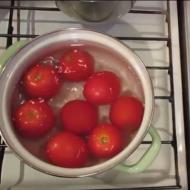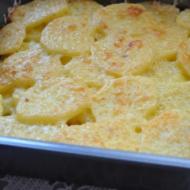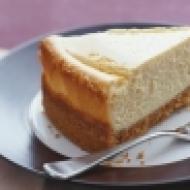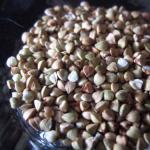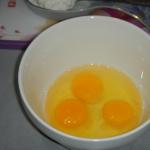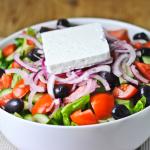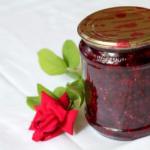
Prepare grappa. How to make grappa at home? Effect on the body. What is grappa and how to drink it? Grappa preparation
We can say for sure that 80% of people have heard the word grappa, but they won’t immediately remember what it is, much less tell you how to make it at home. So, grappa is a very high-quality Italian moonshine made from grape pressings. The strength of the drink varies between 36-55%.
You can make grappa at home as follows:
- squeeze the grapes
- ferment the pomace,
- distill the mash twice into an alcoholic drink,
- keep in a barrel for 6 months (optional).

The quality of the grapes directly affects the quality of the finished drink. Homemade grappa will delight you with a unique taste if the grapes are chosen wisely. Sour varieties are best suited, then the aroma will be more intense. Plus, look carefully to see if the grapes you have chosen are rotten or diseased.
Ingredients:
- 1 kg of grape pomace (cake);
- 1 kg sugar;
- 5 liters of water;
- wine yeast. The dosage depends on the yeast itself; it is usually written on the packaging.
Pomace is the main ingredient in the grappa recipe. This is grape waste (berry skins, seeds, ridges) that is obtained during winemaking. Even if you are not involved in winemaking, you can make grape marc at home without special tools. For example, place grapes in cheesecloth and squeeze it. Drink the juice, and put the mash on the cake.
Preparation:
- Squeeze out the wine must (or grapes).
- Dissolve sugar in warm water (35°C), add the extract and yeast.
- Stir and cover with a lid.
- Stir the mash 2-3 times a day while it ferments.
- When the mash is ripe, filter it.
- Distill twice in a still. Select fractions only during the second distillation.
- Pour the resulting moonshine into oak barrels and place it in the basement for long-term aging (from 6 months). Or use oak chips and pantry in the apartment.
Homemade grappa will delight you with its exquisite, inimitable taste and aroma.

There is another option to make grappa at home. Suitable for those who have problems with access to grapes.
Homemade moonshine with added concentrate, recipe
- For each liter of double-distilled moonshine, add 1 ml and stir well (choose a personal dosage of concentrate depending on your taste sensations).
- Leave for 7-9 days.
P.S. Of course, the resulting product can only be considered an imitation of grappa. However, in Italy there is a decree according to which, in general, all distillates from grape marc cannot be called grappa if the grapes were grown outside this country. But where is Italy and where are we!
Good luck in your creative processes.
Oddly enough, grappa owes its appearance to wine. The thing is that when making wine, a large amount of grape waste remains.
These are the seeds, remaining pulp and skin of the berries. All this is precisely the raw material for the production of this national alcohol.
The grappa recipe is quite simple, so anyone can prepare it at home.
Grappa is a strong drink made from natural waste from wine production. Its strength can vary significantly from 40 to 56 degrees.
Many people believe that grappa is grape vodka. However, technologically this alcohol has nothing to do with vodka. The only thing that these drinks can do is strength.
How to drink grappa correctly?
Good quality grappa is expensive. Therefore, there are three simple rules, the observance of which will allow you to fully enjoy the taste of this drink.
1. The correct alcohol temperature is important. If you get your hands on grappa that has been aged for 1 to 2 years, you should drink it chilled. The suitable temperature is 5-9 degrees Celsius.
Now let's look at a case where you bought a longer aged drink. Firstly, you can be sincerely envied. Secondly, this grappa does not require refrigeration. It is drunk at room temperature.
2. Proper utensils are equally important. The ideal glass for grappa is shaped like a tulip. This feature of its geometry will better reveal its sophisticated bouquet.
However, if you are not going to become a sommelier or show off in front of your girlfriend, then you can also drink this alcohol from ordinary cognac glasses.
3. You need to drink correctly. The grappa glass should be filled three-quarters full. Bring it to your nose and enjoy the aroma. Then take a small sip. Do not swallow the drink right away. Hold it on your tongue for a while and then swallow.
If you do everything properly, you will feel a rich aftertaste. It will have closely intertwined notes of almonds, vanilla, nuts, peach and pepper.
What's the best way to snack on grappa?
Good grappa is good on its own. There is no need to snack on it. However, if we are not talking about a tasting, but about a full-fledged feast, then the table, of course, should not be empty.

In expensive restaurants and bars in Italy, grappa is enjoyed with canapés and olives. If the place is really pretentious, olives can be stuffed with dark chocolate and grapes.
Now let's turn to a simple folk tradition. Grappa is incredibly popular among ordinary Italians as well as vodka among Russians. They are used to snacking on it with pasta, risotto and a variety of meat dishes.
If we move away from the national cuisine of Italy, we will find two options according to which you can choose an appetizer.
Firstly, you can enjoy this alcohol with any hearty dishes to your liking. Secondly, grappa goes well with desserts. Serve oranges, chocolate, ice cream and freshly brewed coffee.
How to make grappa at home?
To the attention of all lovers of strong homemade alcohol, I would like to offer a proven grappa recipe. Anyone can prepare this traditional Italian alcohol at home.
Some consider this drink to be a variation on the theme of grape brandy. The point of view that is closer to me is that in the case of grappa we are dealing with banal moonshine made from grapes. A sort of Apennine version of Georgian chacha. Although brandy, of course, sounds much more elegant.
By the way, this recipe will also be useful for those people who do not know what to do with waste from homemade wine production. Everything is very simple. We use them to make our Italian brandy.
Grappa recipe for home use
We will need the following ingredients:
- grape pomace or marc - 4 liters;
- boiled water – 12 liters;
- granulated sugar – 3 kg;
- wine yeast – 50 grams.
I think that grape marc should be discussed in a little more detail. First of all, let's understand what it is. Marc or pomace are the remains of the pulp, seeds, stems and peel of berries after the juice has been squeezed out of them.

In theory, grappa can also be made from whole berries. However, in practice almost no one does this. This use of grape juice is considered simply unwise.
There is a little secret that allows you to change the taste of homemade grappa. The main thing is that it doesn’t require any effort from you. By changing the amount of juice remaining in the berries after pressing, you will change the final taste of the grappa.
Correct sequence of actions
1. Collect the required amount of grape marc and place it in a fermentation container. It can be made of glass or wood. This is an unimportant point. The main thing is that it contains all our ingredients with a reserve.
2. Cover our raw materials with prepared sugar. After this, add wine yeast there. Fill it all with water heated to a temperature of 30-35 degrees Celsius. We install a factory-made or self-made water seal and place it in a dark place.
There is no need to heat the container additionally. Fermentation goes well at room temperature. Stir our future grappa thoroughly every day. This way you will knock down a cap of pulp.
3. After 1-2 weeks, fermentation will end. This moment can be determined by several signs. The mash will stop releasing gas bubbles. There is sediment forming at the bottom of our fermentation tank. The mash itself will noticeably lighten and taste bitter.
4. Carefully strain the mash. This is done so that during distillation the solid particles do not burn and spoil the taste.
5. After this, pour the mash into the distillation cube of your moonshine still and carry out the first distillation. There is no need to divide the product into fractions. At this stage we are simply collecting raw alcohol. The first distillation should be stopped when the strength of the output product drops below 30 degrees.
6. Dilute raw alcohol with water to a strength of 20 degrees. It is dangerous to re-distill a stronger liquid. Indeed, due to the increased concentration of alcohol vapors, the moonshine still may catch fire.
7. Do a second distillation, dividing into fractions. Collect the first 120-150 ml separately. These are “heads” containing harmful substances. You can't drink them. Then the “body” of the grappa is selected.
Collection must be stopped when the strength of the drink drops below 44-45 degrees. These will already be “tails”, which also cannot be drunk. They can be assembled and used to attach the next batch of mash.
8. Next you have a choice. Essentially, homemade grappa is ready and you can move on to tasting. However, if you want to get a drink as close as possible to the original, then our grape moonshine needs to be infused. Ideally, it should be aged in an oak barrel.

A cherry container would also work. The minimum aging period must be 6 months. It can be increased up to several years. However, if you do not have a suitable barrel or such a reserve of patience, then you can safely try the resulting grappa.
Grappa is the national Italian alcoholic drink. Today we will visit the Marzadro factory where grappa is made.
The plant looks like this.

Grapes grow nearby, very tasty by the way.

This plant was founded in 1949 by the aunt of the current owner. Traditions are very revered and respected here; old family photographs hang at the plant. In the photo in the center and on the left, the current owner is still a small boy.

This is a family heirloom Moto Guzzi motorcycle. In Italy they make a lot of jokes about motorcycles, but the owner doesn’t seem to be a biker, because he says that I was the first to notice that he has a British sidecar arrangement, he hadn’t thought about it before.

The owner of the distillery, Andrea, shows an old apparatus for distilling grappa. By the way, pay attention to what the oligarch looks like. Andrea is a very wealthy person, and at the same time simple and easy to communicate with.

Grappa is made from grape pomace that remains after the grapes are pressed to make wine. It's harvest season and wineries are working at full capacity. Every day, grapes are pressed at wineries and the plant buys the presses from the wineries. Now, when wineries are fully engaged in the production process, the grappa factory is filling its storage with raw materials. A truck with wringer has just arrived and is being unloaded.

Andrea makes a qualifying bow.

These barrels are filled with imported pressings.

Grappa will be released in a week or two. This is the line for feeding the presses into the brewhouse.

The pressings are loaded into these vats and the cooking process begins, the pressings are evaporated.



Then the vapors pass through and are filtered in these columns and cool down.

View from above.

Production is controlled by the financial police, which licenses products and issues excise taxes. For this purpose, all tubes at the joints are sealed. In your production, you can’t just unscrew the tube and screw it back on. This is done only in the presence of representatives of the financial police. This is done so that they are not butted with alcohol, thus the excise tax issued on these products guarantees that the grappa was produced in accordance with the recipe and was not butted with alcohol.

The cellar where grappa is aged.

The barrels are behind bars and the premises are also sealed by the financial police. The distilled grappa is taken for sampling, the volume of the barrel is described, it is sealed and placed in storage. The storage facility is sealed. When the time comes to bottle, a representative of the financial police arrives, opens the premises, takes out the required barrels, checks them and then bottles them. And the storage facility is sealed again. This is such strict control.

But there is a basement where, as Andrea says, there is a strategic reserve. Grappa is not for sale, for myself, so to speak.

We taste a very cool and aged grappa.

Then we go to the roof, it would seem why. And there, on the roof, there are lawns on which flowers grow. Why you ask? And Andrea will answer you. People live in the mountains and look from above, see production, but they see lawns with flowers and they have a view of flowers, not production. That's it.

By the way, the plant supplies grappa to Russia. If you are interested in purchasing grappa from the Marzadro plant, you can write to me by email, tell me who you are, where you are from and what you have (store, restaurant), I will give you the contacts of the supplier in Russia.

Let's get to know the mysterious guest a little closer.
Origin story
In times long past, which seem almost fabulous to us, in Mesopotamia, known today as the region where human society quickly grew out of its cradle, became stronger and acquired almost modern features, the culture of producing strong alcoholic beverages arose.
They were obtained by distillation. It is impossible to make grappa without distillation, so the appearance of the drink is associated with Mesopotamia. However, there is no reliable evidence that grappa was first made there.
Information relating to later times is much more accurate: in 511, in the area of Friuli (modern Northern Italy), a drink made from apple cider was produced. Distillation was used to obtain it. This was already real grappa, judging by the description of the historian Luigi Papo, who spoke about the unusual drink.
In 1779, the Nardini distillery was built in Italy, where they used the steam distillation method to prepare grappa on an industrial scale. The alcohol turned out to be a bit harsh, not for everyone. Later it was softened and the taste was “diluted” by aging for a long time in oak barrels.
Today we drink just such grappa - only now, thanks to numerous experiments with recipes, its taste has become very different. Grappa is infused with herbs and fruit syrups are added, so everyone can choose the option that suits them best.
Kinds
Grappa is distinguished by exposure time and number of degrees:
- The youngest drink - Giovane. It is colorless and has a harsh taste. If you see such a word on the label, know that this grappa goes into bottles immediately after distillation. It is not aged.
- Somewhat softer Affinata. It is poured into barrels for a while before being sent for sale.
- Vecchia stored in barrels for a whole year. During this time, alcohol becomes stronger and richer.
- Very old grappa - Stravecchia.It has a pleasant golden color, it is quite strong, comparable in strength to vodka or whiskey - the alcohol content reaches 45-50%.
Fortress
It is impossible to say unequivocally how many degrees there are in grappa: it depends on its type, the raw materials used and the aging time.
The weakest is 36%. The strongest grappa is 55% alcohol.
Which grappa to choose?
When choosing a purchase, be guided by your taste. You can take the Blanka type. It may seem a little harsh, but in terms of price the drink is considered the most affordable. Do you want something stronger, with an unusual taste? Buy Stravecchia.
If you like to enjoy not only the taste, but also the aroma of alcohol, then Aromatica is for you. It is prepared by distilling Muscato or Prosecco grapes, which are famous for their pleasant aroma.
Do not confuse the drink with another drink with a similar name - Aromatizzata. This alcohol is produced by infusing spices, nuts and berries - almonds, cinnamon.
If you prefer weaker alcohol, up to 30 0, then take Soft.
Do you have a special occasion - do you want to invite a lady of your heart on a date or celebrate some important event? Splurge on Nonino. The drink is prepared from almonds and plums, which grow in some areas of Italy. Very delicate taste, exquisite aroma - what you need for special occasions.
How to drink and what to snack on?
Grappa is not so simple, so a culture of its consumption has long been developed. It is best to pour alcohol into tulip-shaped glasses - this way it will gradually reveal its aroma. It is advisable to cool it to a temperature of 5-9 0 C.
Don't fill the glass to the top. Pour a little, maybe half or three quarters, and drink in small sips, trying to experience the taste and aroma as much as possible.
You can enjoy the drink with hearty dishes. Roast, ham or some other meat or fish is perfect.
Grappa also goes very well with fruit and chocolate. When inviting guests to try grappa, complement it with chocolate dessert, fruit mousse, baked pears or apples. In fact, this is a universal drink; almost all snacks go well with it.
It's winter, have you come in from the cold? Prepare hot dishes, put something sweet on the table. Summer, hot? Make a fruit salad or fruit platter.

Making cocktails
You can drink grappa in its pure form. It also works well in cocktails. Perhaps the most popular is “ Italian wife».
Ingredients:
- 40 ml grappa;
- 5 ml Blue Curacao liqueur;
- 10 ml lemon juice.
Cocktail “Boarding”
It is prepared as follows. Take:
- peach liqueur (20 ml);
- 40 ml grappa;
- a piece of lemon zest;
- 20 ml lemon juice.
After mixing the liquid ingredients in a shaker, pour them into a glass and add lemon zest and a piece of ice.
Cocktail "Grappatto"
- "Amaretto" - 10 ml;
- grappa – 30 ml;
- 1 cherry.
Mix the ingredients, pour into a glass, garnish with a cherry.
Grapes and mint
- mint liqueur (20 ml);
- 40 ml grappa;
- 1 cherry.
The preparation method is the same - you need to mix everything and pour it into a beautiful glass, garnishing with a cherry.
Clover
This cocktail is a little more difficult to make, as it requires more ingredients. First, carefully separate the white of a raw egg. Prepare:
- strawberry syrup (10 ml);
- grappa (30 ml);
- lemon juice (20 ml).
Mix the egg white with other ingredients. Add ice.

Homemade recipe
Is it possible to make grappa yourself? If you have your own vineyard and a large cellar where oak barrels are located, this will not be difficult to do.
A little about grapes
There is a little trick to achieve the ideal taste for grappa: the grapes must be unsweetened.
Therefore, Italians most often make the drink from grapes grown in the northern regions of the country. There is a little less sun, which means more acid remains in the grapes. In other words, the grapes used as raw materials should be slightly unripe.
Preparation of raw materials
The first thing you need to do is squeeze the juice out of the wine berries. If you squeeze it properly, the grappa will turn out somewhat less tasty. The best drink comes from the squeezes, where up to 50% of the juice remains.
You can drink the juice - it contains a lot of vitamins. And the remaining cake will be used to produce alcohol.
By the way, in industrial production, grappa is prepared from the pomace remaining after processing grapes into wine. There are quite enough substances necessary to produce an excellent drink.

Fermentation
After the raw materials are selected, the fermentation stage follows. Place 10 liters of grape pomace in a large glass bottle. If you have a wooden barrel, you can place the raw materials directly there. Do not add twigs and leaves “for piquancy” - the resulting grappa will be bitter!
Add sugar - 5-7 kg. Add also yeast - 100 g. Pour in 30 liters of boiled (and, of course, cooled to room temperature) water.
We wait a week - fermentation will begin. Place the container in a warm place so that sunlight does not reach it. Stir once a day. A “cap” of gases will form during fermentation, which should sink to the bottom when stirred.
Distillation
After 2 or 3 weeks, when fermentation is complete, all that remains is to distill the grappa. We strain the future drink twice, making sure that the pulp does not get into the distillation apparatus.
The first distillation of raw materials is ordinary, and the second involves cutting off the “heads” and “tails”.
Excerpt
Aging is the final stage of cooking. After distillation, the drink is poured into oak barrels and stored in the cellar. There, in semi-darkness and coolness, grappa ripens for six to 12 months. You can hold it longer, but then it will become too strong.
Some winemakers skip the last step and pour the alcohol directly into the bottles. In principle, this is also an option - you can drink this grappa right away, but it will be a bit harsh.
Now you are familiar with the unusual Italian drink - grappa - and you can try treating your friends at any holiday. And if you are brave enough, you can make grappa according to the suggested recipe yourself. Invite us for a tasting!
Grappa is the true embodiment of the Italian temperament in degrees of strength. This is an amazing and original alcoholic drink. Being a product made from wine production waste, it has conquered the world with its taste. Every year, about 40 million bottles of grappa are produced in Italy, which are distributed to all countries. After all, it is the drink produced on the territory of the republic that has the right to bear the proud name of Grappa. We bring to your attention the most complete and accurate hop review.
The origin of grappa is inextricably linked with the advent of distillation methods. Distillation methods were developed in Mesopotamia between the 8th and 6th centuries. BC. and was soon applied to wines to make cognac. Distillation of marc probably also has very distant roots. There is a legend telling about a Roman legionnaire (1st century BC), who, returning from Egypt, stole a distillation apparatus and began to obtain distillate from grape pulp.
The historian Luigi Papo notes in 511 AD. in the region (Friuli) the first production of the drink is in the hands of the Burgundians. They borrowed methods for distilling apple cider from neighboring Austria and applied it to squeeze grapes to create grappa.
The emergence of the Nardini distillery in Bassano del Grappa in 1779 led to a real revolution through the introduction of the “steam distillation” method, which is still used today. In fact, Bortolo Nardini is the oldest distillery in Italy.
After the Second World War, Italian companies experienced a period of unprecedented growth. The Italians changed their way of life, followed by a radical change in tastes.
Grappa producers kept up with the times and listened to consumer preferences. The taste of the drink became soft, less aggressive, and it began to be kept in wood for a long time. This is how new types of grappa were released and scattered all over the world.
What is grappa
Grappa is essentially a distillate from grape marc. Drinks obtained by a similar method are called differently in other countries. For example, in Germany it is Schnaps, in France it is Mark, in Spain and Greece it is Tsikoudia. For Uruguay, European legislation does not apply, so they use a very similar term grappamiel (grappa with honey). Do not confuse grappa with brandy. The latter is the result of distilling grape must, not pulp.
The name of the drink most likely comes from the word "graspa", which in (Veneto) means "grapevine". There is an opinion that the product got its name from the province of Bassano del Grappa. However, there is no evidence of this fact.
Production
The quality of the grape marc is the first and most important factor for the production of a good drink. More often, grappa is made from pulp left over from the production of red wines. Such pomace undergoes a fermentation process in wort, so it contains alcohol and only a small amount of sugar and does not require additional preparation.
When making white wines, the pulp is not fermented, and therefore is very rich in sugars and does not contain alcohol. She is called "vergini" (virgin). The must for rose wine ferments for some time along with the berries. Such pulp is called “semifermentate”. It already has some alcohol in it. Before producing grappa, both types of raw materials described go through a fermentation stage.
The highest quality grappa requires the pomace to be pitted before distillation. And, even more so, it is very rare if a distillery uses pulp with an admixture of stems and leaves.
Distillation
Automated distillation methods have been introduced in Italy for more than 50 years. Modern distillers are a structure of 3 connected devices, shaped like a truncated cone. This ensures the highest degree of purification from impurities. Such installations are characterized by a continuous distillation cycle, high power and relative simplicity of the manufacturing process.
Despite the many positive properties, some drink producers are of the opinion that grappa obtained in distillers with an intermittent (periodic) cycle is much better in quality. Therefore, in reputable factories they prepare it the old fashioned way or combine 2 methods.
Excerpt
Aging or maturation is an additional stage in the preparation of the drink, since the final stage of obtaining young grappa is filtration. This removes oil impurities and produces a crystal clear and transparent drink. After this, one grappa is sent to bottles, the other for maturation.
The aging process takes place in wooden barrels, usually 225 liters in volume. The appearance and taste of the final product depends on the type of wood with which it comes into contact. The most commonly used wood is oak, acacia, ash and cherry.
Cherry containers produce a lighter drink. Grappa from oak barrels has an amber color and a characteristic taste due to the high content of tannins in the wood. In addition to the type, the specific type of oak also influences the final aroma. Therefore, barrels are made from trees that grow not only in Italy. Another characteristic of the aging process is time. Depending on the duration of the stage, different types of grappa are obtained.
Kinds
Grappa is classified according to its age, the nature of the marc and the grape variety responsible for its special aroma. The following types of drinks are distinguished:
- Giovanni– young grappa, which remains in inert containers made of steel or glass before bottling.
- Aromatica– a drink obtained from aromatic grape varieties (Muscat, Malvasia).

- Affinata– grappa bottled after storage in wooden containers for 12 months.
- Invecchiata– a mature drink, also called Vecchia (old), which is bottled after 12-18 months of aging in wooden containers.

- Stravecchia or Riserva– grappa that matures for more than one and a half years in wooden containers.
- Monovarietale or "One Variety"- a drink made from a certain grape variety, which is usually indicated on the label.
- Polivitigno- a product from different grape varieties, but belonging to the same family. Such raw materials can vary in terms of ripening, harvest time and winemaking technique.
- Flavored (Aromatizzata)– grappa to which one or more natural vegetable oils have been added at the end of distillation.
This, of course, is far from a complete classification of grappa. If we take into account the geographical origin, then we can distinguish many more variants of the drink. All of them differ from each other in the centuries-old tradition inherent in the region and the culture of distillation. And, of course, one drink can belong to different types. For example, grappa can be young and at the same time flavored.
Manufacturers
There are about 130 different grappa producers, of which 63% are in northeastern Italy.
At some distilleries, such as Rovero and Castelleri Bergaglio, the production of a strong drink accompanies the main one. Other factories (Poli and Nonino) are aimed exclusively at the production of grappa and buy raw materials from winemakers. Still, from this diversity, several companies stand out that have earned respect and popularity among consumers:
- Berta– a company with a very wide range of drinks. A distinctive feature of Bert's grappa is the unusual shape of the bottles combined with the highest quality of the drink.

- Bocchino is a company that carefully preserves traditional methods of distillation and aging of grappa. Cellars for maturing the drink are dug into the hills. Bocchino produces 4 types of grappa with a strength of 40-50 degrees.
- Bortolo Nardini– the oldest factory associated with the Nardini family. Even today, Bortolo's descendants continue the tradition of production.
- Vittorio Capovilla- a company primarily engaged in the distillation of fruit drinks and producing grappa in small quantities. Grappa di Bassano with an alcohol content of 41% is especially appreciated.
- Marolo– a distiller that combines modern equipment with traditional methods. A distinctive feature of the company is a wide range of not only drinks, but also sweet desserts with grappa.

- Nonino- a company representing the women's quota in the distilleries' standings, since the Nonino family consists mainly of women. The company always strives to revolutionize production methods, while respecting traditions. All types of drinks produced by Nonino are worthy of attention, but we can highlight Grappa Cru Monovitigno Picolit. Its bottle is made in the form of a flask. It has a mild taste with the aroma of honey and acacia flowers.
- Poli is a company that produces a large assortment of grappa in recognizable bottles with a long and narrow neck. The plant uses 2 distillation methods, producing drinks with a delicate taste.
- Romano Levi– a legend in the world of grappa. The distillery still uses a direct distillation method with an intermittent cycle. The bottles are decorated with labels with unusual designs intended for collectors.
There are many more producers of high-quality grappa than are listed. When choosing a drink, you can focus not only on the brand, but also on the names indicating a specific region, the use of which is regulated by law:
- Grappa di Barolo;
- Grappa piemontese or del Piemonte;
- Grappa lombarda or della Lombardia;
- Grappa trentina or del Trentino;

- Grappa friulana or del Friuli;
- Grappa veneta or del Veneto;

- Grappa dell'Alto Adige;
- Grappa siciliana or Grappa di Sicilia;
- Grappa di Marsala.
The production of these types of grappa must meet certain standards. Firms that do not comply with the requirements to use the name "grappa" or geographical indication use the term "acquavite di vinaccia" to refer to the drink.
How is it different from chacha
Many consumers ask the question: “How is grappa different from chacha if they are produced using similar methods?” At first glance, the only difference between these “intoxicated sisters” is their homeland (chacha is a Georgian distillate from grape marc). In fact, this is far from the case.

Based on the information provided, we can conclude that grappa and chacha are two drinks that are different “from roots to tips.”
How to taste and what to drink with
Tasting grappa by professionals is a very precise process with strict requirements. It should take place in a room with light walls and good sound insulation, so that attention is concentrated only on the aroma of the drink.
Tasters are advised not to wear perfume, smoke or consume strongly flavored foods or drinks. If several types of grappa are involved in the process, then they start with young, move on to aromatic and finish with aged.
The optimal temperature of the drink is 9-13 degrees. Although mature grappa is an exception. It is served at 17 degrees.

The ideal glass for grappa has the shape of a tulip and a height of 10-15 cm. It should be medium convex and made of crystal or ringing glass. The neck of such a wine glass is narrow with an open rim. It promotes the gradual release of aroma.
- We recommend visiting:
The first assessment of grappa occurs visually against the light. If the drink is not flavored with oils, then any cloudiness will be considered a defect. Next, the color is determined, and young grappa is ideally absolutely colorless.
In order to appreciate the smell of the drink, the glass is held slightly away from the nose, trying to perceive the nuances rather than inhale the alcohol. Young grappa has a clear, fresh aroma with fruity accents. Mature - full of notes of vanilla, cinnamon, licorice, cocoa and even tobacco.
To assess the taste, roll the grappa on the tongue in small sips for a few seconds. This allows the taste buds to fully open up. After each type of drink, it is recommended to drink half a glass of milk to “renew” the oral cavity.

If the purpose of your tasting is not to evaluate quality characteristics, but to have a pleasant time in the company of friends, then remember that grappa is a classic digestif. It is drunk in small doses after meals to aid digestion. In Italy, grappa is added to... The Italians call this drink caffè coretto, which means “corrected coffee.”
A pleasant accompaniment to the grappa's own aroma will be salted pistachios and croutons with acacia honey, sprinkled with Parmesan flakes.
Price
How original grappa is, the range of prices for it is so surprising. In Italy, you can buy a strong drink from 7-8 euros per 500 ml. But this is only the starting cost. Depending on the manufacturer, type and age of the drink, buying grappa can cost you even 600 euros for the same 500 ml.
In Russia, the cost of grappa starts from 1000 rubles for a drink of dubious quality. It reaches up to 65,000 rubles for 500 ml for the collection Grappa with a long aging period.
This is where the intoxicating information is completely exhausted. Live zealously, love honestly, travel enthusiastically and remember: “Don’t put off for breakfast what you can drink for dinner!”
↘️🇮🇹 USEFUL ARTICLES AND SITES 🇮🇹↙️ SHARE WITH YOUR FRIENDS


